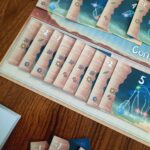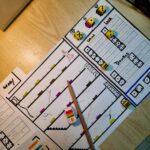Starfront Scouting Academy
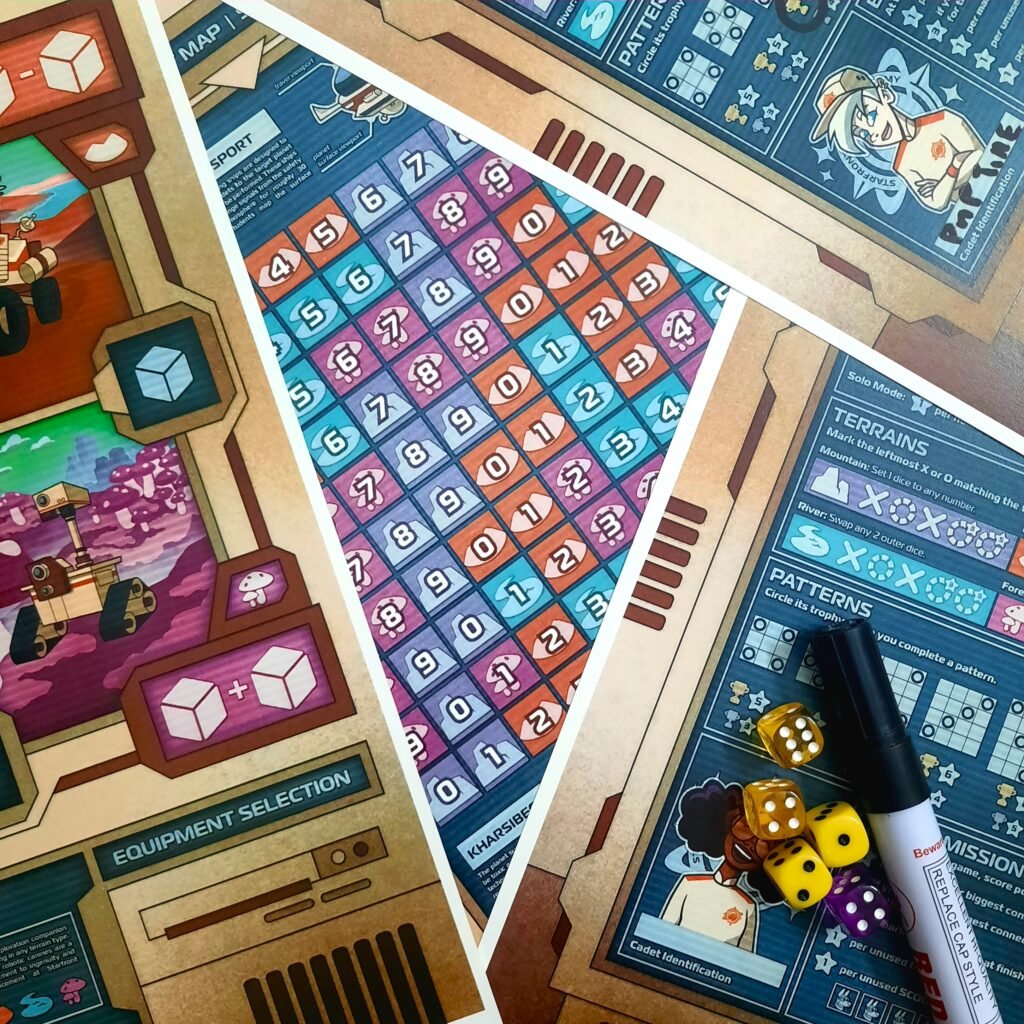
The final exam is here.
And it’s nothing like you’d expect.
No papers. No quiet rooms. Just a toxic, uninhabitable planet you need to analyze alongside your fellow scouting cadets, and be the best at it. No pressure!
Do you have what it takes to analyze 4 unique terrains, constantly adapt, unlock new skills, and be the topper of your class?
I first heard about Starfront Scouting Academy back in June, and the story instantly grabbed my attention. Its fresh take on space exploration intrigued me, and seeing Chris Backe as the designer only added more to the excitement.
After playing Dragon vs Kingdom last year and getting a closer look at Chris’s journey as a game creator, my expectations for Starfront Scouting Academy naturally shot up. Into deep space!
First Impressions
Starfront Scouting Academy is designed by Chris Backe and illustrated by Parker Simpson, and published by Shiny Pigeon Printables: the new print & play division of Shiny Pigeon Games.
It is a roll-and-write that can be played by 1 to 6 players, with each session lasting about 30-45 minutes. Having recently ventured into space with Hyperdrive Odyssey, which blended strategy with storytelling, it was refreshing to see another PnP title carve out its distinct path. I’ve yet to play a game that took me back to my exam days. And it’s been a solid eight years since I last sat for one!
Questions that raced through my mind before exploring the planet:
- Will the game give me exam vibes?
- How will I perform as a fellow scout?
- Solo or multi-player: which one will I enjoy more?
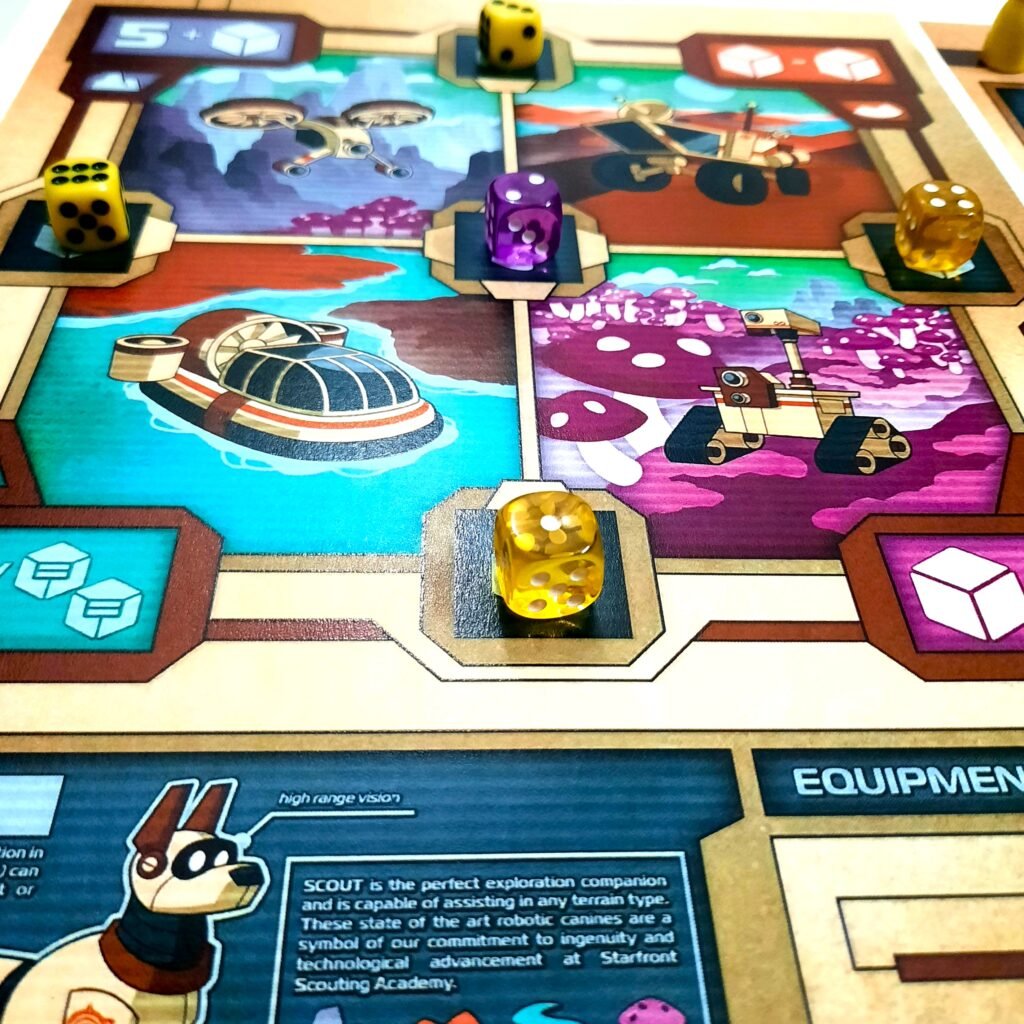
Building the game
Entry: before playing.
The “no assembly required” philosophy of Shiny Pigeon Printables really makes it effortless to prepare the game. Print out the game sheets and grab a few components. That’s it!
You have 3 different types of sheets at your disposal: An Equipment Selection Sheet, 4 Planet Map Sheets, and 6 Scouting Exam Sheets.
If you’re playing solo: you only need the Equipment Selection Sheet, 1 Planet Map Sheet, and 1 Scouting Exam Sheet. That plus 5 dice, a tracker/meeple, and a pen.
For multi-player mode: the Equipment Selection Sheet, 1 Planet Map Sheet, and 1 Scouting Exam Sheet per player. That plus 5 dice and a pen per player.
I can already sense replayability factoring in, with multiple Planet Map Sheets in the equation. Bravo!
Lamination: needed if you want to make the sheets replayable. Laminate the Planet Map Sheets and the Scouting Exam Sheets.
The Scouting Exam Sheet instantly gave me strong exam vibes. Great job tying the theme into the components! The sheets also look fantastic, like digital tabs straight out of a spaceship.
Here we go!
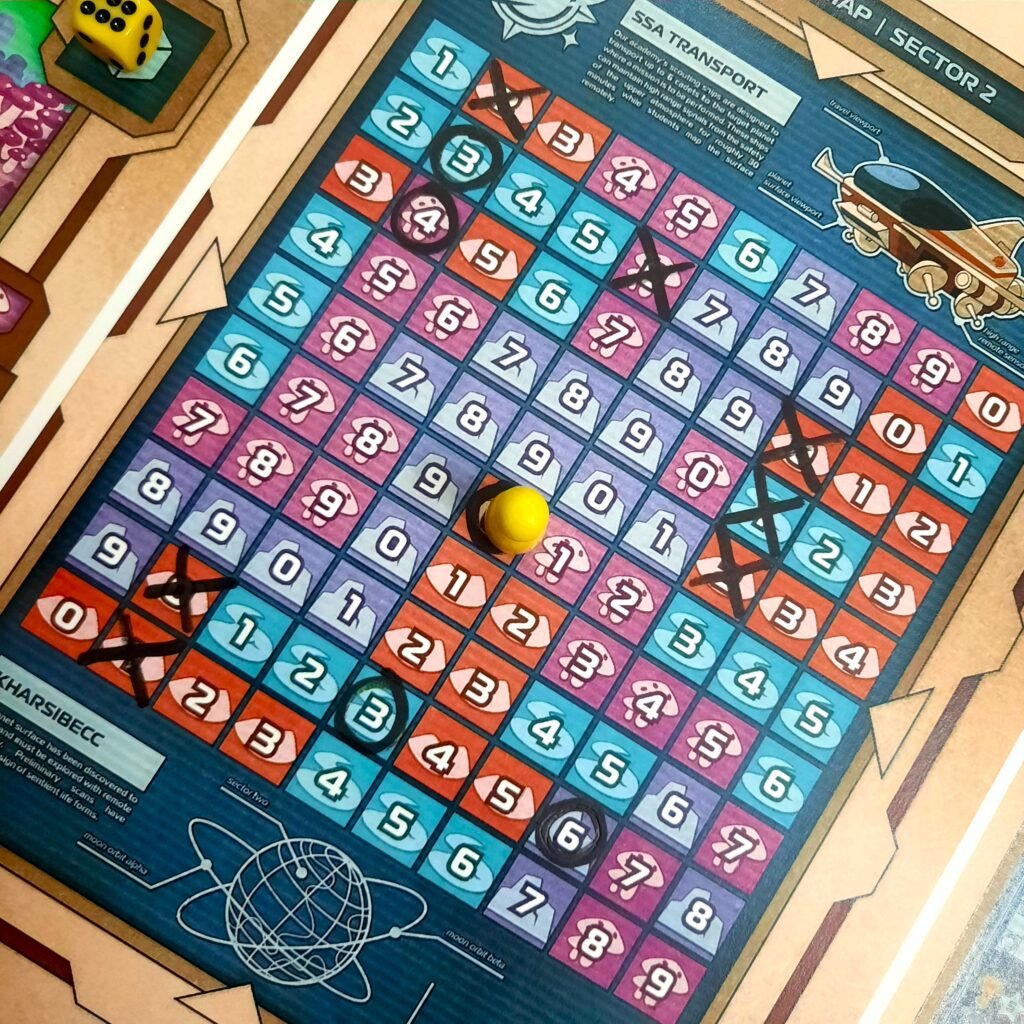
Findings
Entry: two weeks in.
After two weeks of exploring planets and trying to be the topper of my class, these are my findings.
Want to be the topper? Master the juggling act
-Which terrain do I scout first?
-Which number should I generate?
-Where do I mark the number on the Planet Map Sheet?
-How, and where, do I create the patterns?
-How many patterns can I create?
-How can I best tackle the Storm phase? (solo)
-How can I create patterns before my opponents? (multi)
-How do I avoid bringing the endgame?
Just a few of the many questions that’ll race through your mind during the exam. And it’s a fun exercise!
It may seem overwhelming at first, but give it a round or two. You’ll get the hang of it and learn to balance the multiple elements in no time!
With a handful of things to keep track of, there’s plenty of room for strategy. Big green flag!
You may suck at first
After going through the detailed tutorial and playthrough video for the game, I assumed I’d ace the exam. However, after 30 minutes of trying it solo, I only managed to score 43.
And being someone who can’t digest getting 43/100, I tried to understand where I could have done better. In short:
- I was not looking at the game from every angle, like I should.
- I was taking a lot of damage in every storm phase, only because I wasn’t placing the numbers well.
- I didn’t prioritize creating the patterns as much, which gives plenty of points.
- I triggered the endgame way too early, kudos to my number placement and the storm.
Much to my relief, I found out that Shamus from Out of the Box Board Games also started with a score in the 30s, as he mentioned in his playthrough video. So it’s okay to fail at first, as long as you know how to bounce back!
Which I did, as you can see on my second try. 77 is not bad at all. I got myself a B+. Not top of the class performance, but hey, I walked away with some dignity.
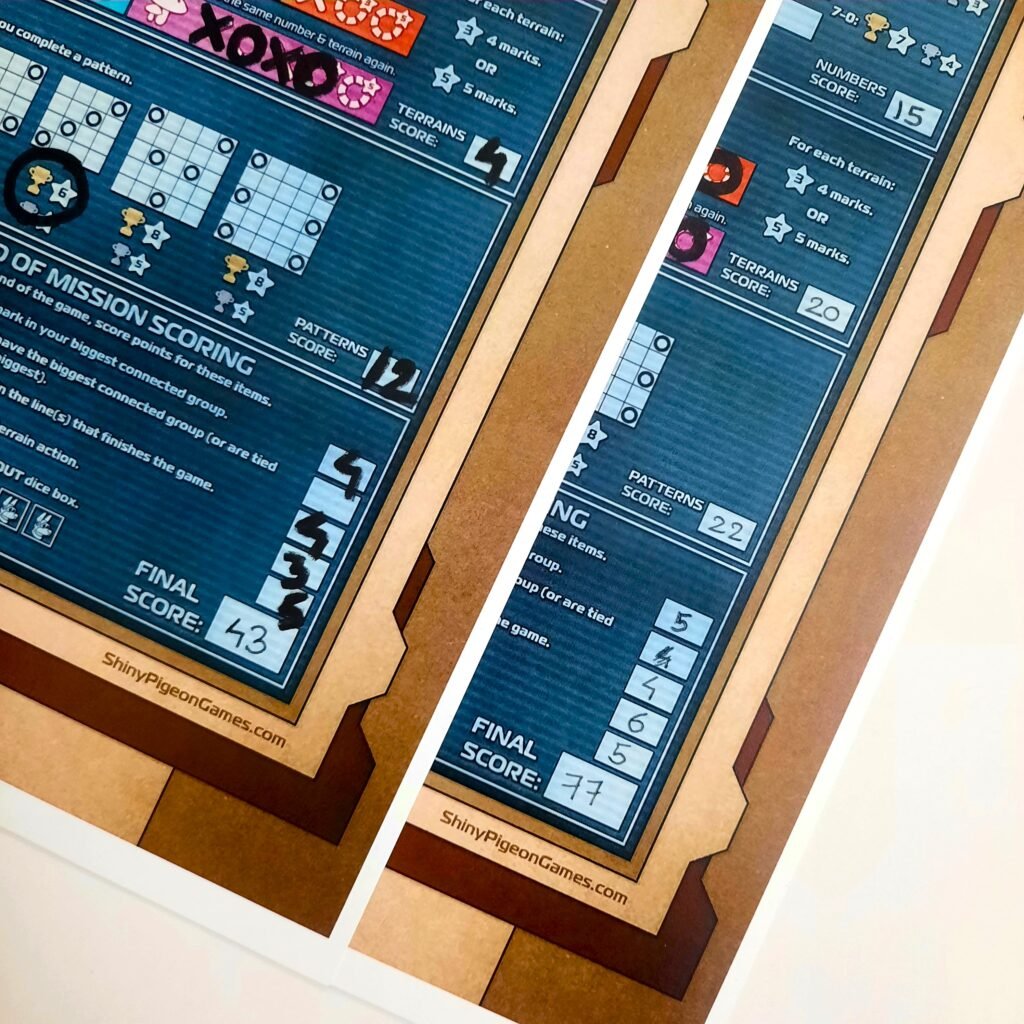
Dice manipulation!
I recently published my take on games with interesting dice mechanisms. Had I played Starfront Scouting Academy a month ago, I’d have mentioned it too!
I’m a big fan of dice manipulation, and this game lets you do it in every round; while generating a number in a terrain and also while using an unlocked terrain action. The 4 Action Dice and the Scout Die dish out a handful of possibilities that you can work with to generate a number to explore the planet, while the unlocked terrain action gives you the edge you’ll need when the going gets tough.
The dice mechanism perfectly complements the juggling act the game puts you through, earning Starfront Scouting Academy a well-deserved spot in my hall of fame for brilliant dice mechanics.
Must try solo first
While it’s quite an interactive multiplayer roll-and-write, I highly encourage you to try the game solo at least once. Why?
To explore the Storm Stimulator: it’s only available in the solo mode, and I really enjoyed it! It’s an automa that made me rethink every move as I marked my scouting sites on the Map Sheet. While it felt a bit too challenging at first, I gradually got the hang of how it reshapes my layout of exploration in the Map Sheet.
I found myself not just working around it, but also planning ahead to stay one step ahead. The Stimulator adds another layer of dice manipulation, where the unused dice during terrain selection determine the storm’s coordinates. Fascinating stuff!
A proper warmup: before facing opponents with varying skill levels, it’s best to get some practice in with the Stimulator!
Solo or Multi-player?
After a solid week of solo play, I gave the game a try in both 1v1 and four-player modes. Playing with more people made the game feel more intense, constantly reshaping both the Equipment Selection Sheet and the Planet Map Sheet. If I had to pick my favorite(s), it would be the solo and 1v1 modes.
Solo: loved the Storm Simulator, and the changes were self-inflicted, so it allowed me to understand the game better
1v1: things were altering just the right amount for me, enough to keep me thinking, adapting to my opponent’s moves, and finding opportunities to rack up my score.
I need more gameplay to make a final call on the 3- to 6-player modes, but judging from the game’s learning curve, I’m sure it gets highly entertaining when more players join the party. Game time should shrink as well.
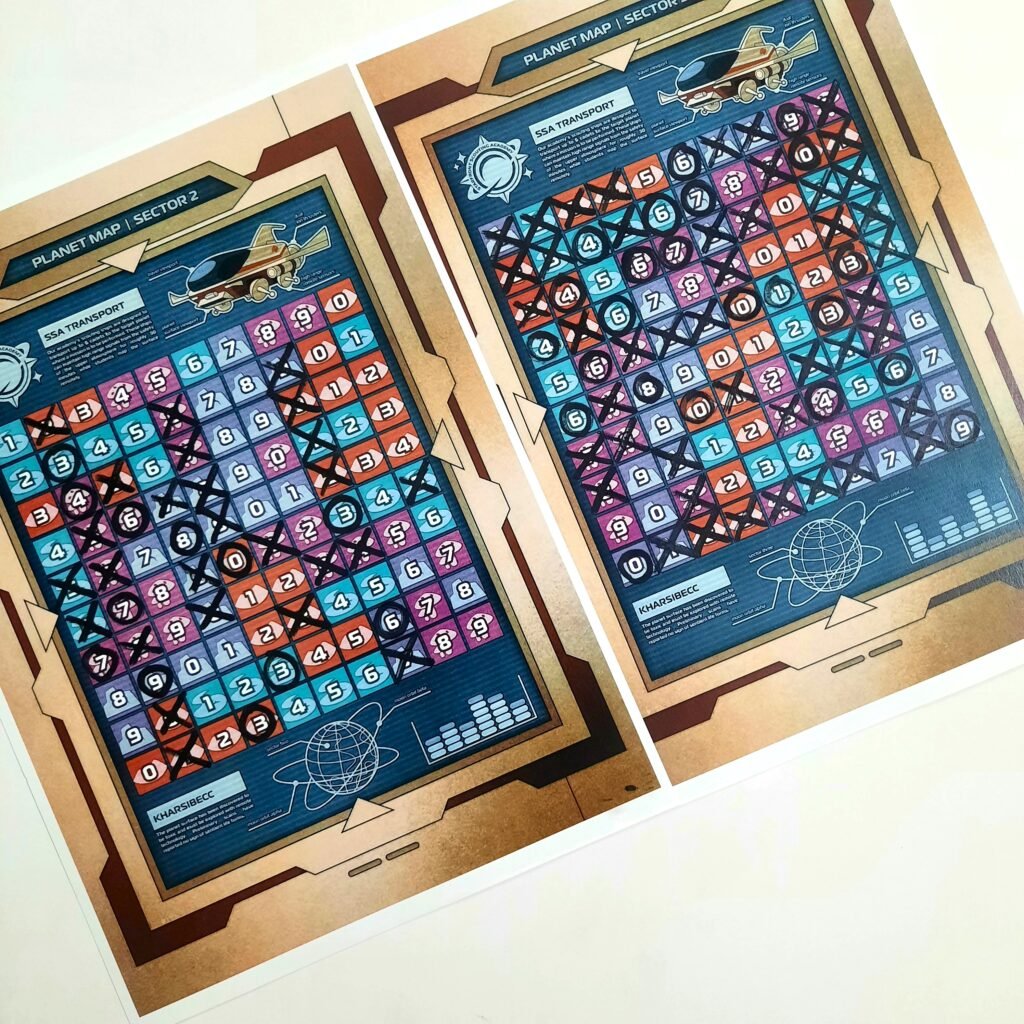
Felt like an exam?
As for someone who plays tons of games and also creates a few, I know how important it is for a game to integrate its theme with mechanics.
Chris introduced a unique concept of scouts taking exams in a PnP game, but did I really feel the intensity of an exam during gameplay?
Oh yes, I did!
The game ends with a score tally to determine your grade, and that moment stirs up different emotions depending on how many players are at the table.
While playing solo, my emotions altered depending on how I performed. When I scored 77, counting the points was exciting because I knew I’d done well. But when I failed, I felt nervous while tallying the score. For obvious reasons!
In multiplayer mode, checking the final score became its own kind of drama. In the four-player mode, we even went over each other’s scoresheets to make sure no fishy business took place. It was at the scoring stage of the game that I realized a higher player count can make this game quite entertaining!
Will you pass the exam?
Scout, your syllabus is complete. Now it’s your turn to take the exam, while I try to beat my best score of 77.
The Kickstarter campaign for the game just launched, and is already off to a blazing start. You know what to do!
Recommended items
Game Overview
Publisher: Shiny Pigeon Games
Designer: Chris Backe
Artist: Parker Simpson
Number of players: 1 to 6
Difficulty level: Easy to Medium
Rounds of gameplay needed to learn: 1 to 2 rounds
Game duration: 30-45 minutes
Available on: Kickstarter
Theme: Roll-and-write | Dice Manipulation
Number of pages and color: Max 11, depending on the number of players (color print)
Assembling difficulty level: Super easy. No Assembly required
Lamination: Recommended for replayability
Additional elements required: 5 D6 dice, a token/tracker, and a pen per player
Time to learn: Within 20 minutes
Travel-friendly: 9/10
Shelving friendly: 10/10
Rating from PnP Time: 8.5/10

Tasliman is a board game developer based in Bangladesh, with the dream of exploring the world of games and introducing it to anyone new to it. He is the founder of Kraftz, a brand that develops board games commercially, as well as with reputed entities like BRAC and The Gates Foundation.

